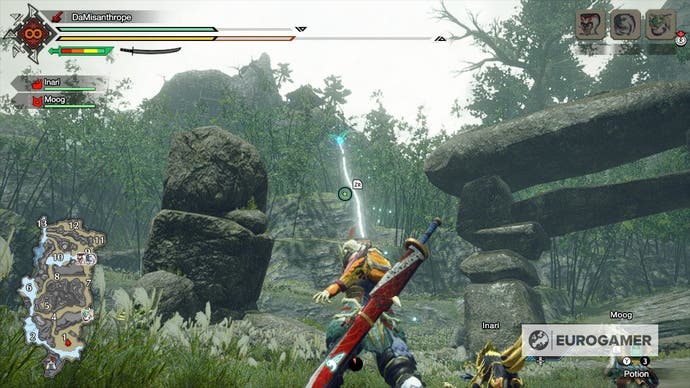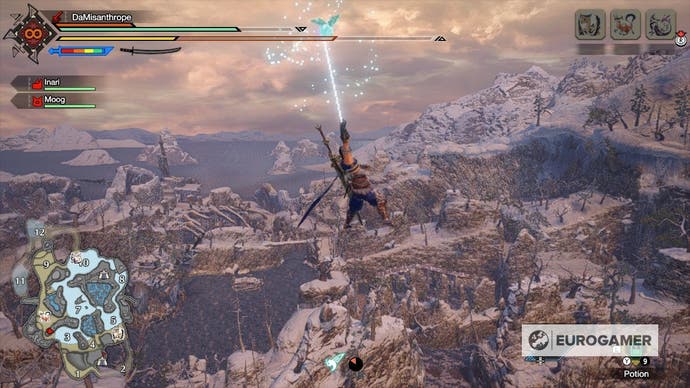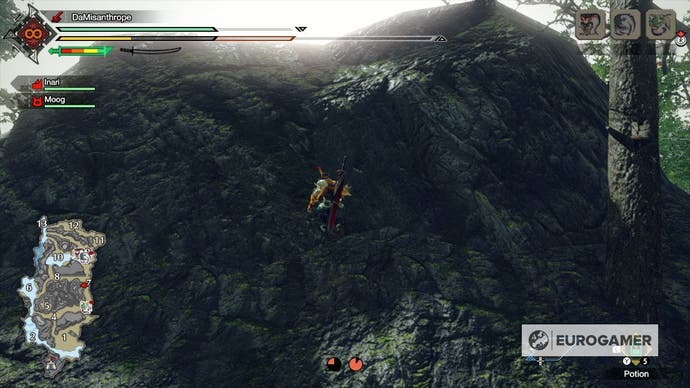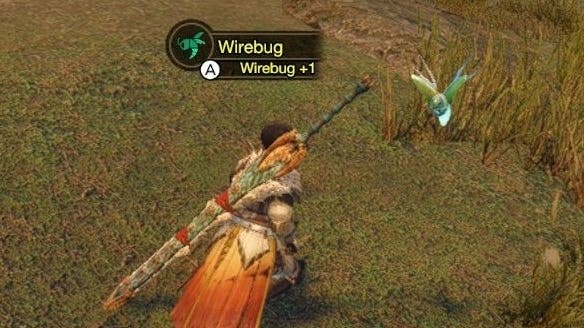Monster Hunter Rise Wirebug controls, skills, recovery and how to wiredash explained
How to make use of Rise's multifaceted new tool.
The addition of Wirebugs are a real game changer in Monster Hunter Rise.
These special insects produce a special kind of silk thread that's basically thick and durable enough to use as a grapple.
When you fire a wirebug, you essentially take the silk it leaves behind to fling yourself in its direction.
You can basically use them to traverse environments much faster and reach new heights like never before, while they also expand your options in aerial combat that was previously limited to either jumping off a higher platform or a couple weapon types.
Note these are technically different to Great Wirebugs, which can be placed into the environment permanently as shortcuts to allow you to access hard-to-reach areas.
On this page:
For more help on Monster Hunter Rise, check out our weapon types list, in-depth Insect Glaive page, Jewel lilies locations and how to use Traps and Tranq Bombs to catch monsters.
Wirebug attacks and moves explained: How to use wirebugs in Monster Hunter Rise
Wirebugs have two main uses, either for traversing the environment via a wiredash, or for combat.

Traversal can be for just moving along the ground or in the air, but a wiredash can also help you scale up walls you normally can't climb.
The ability to wiredash in the air means just about every weapon can have an aerial attack that was previously the domain of just a couple weapons or environmental factors, such as leaping off a platform.

Wirebugs also allow you to perform special attacks called Silkbind Attacks. These are normally triggered when your weapon is unsheathed and by pressing ZL + X or ZL + A. If you're using a ranged weapon type, Silkbind Attacks are triggered by pressing R + X or R + A.
Depending on the skill, Silkbind Attacks cost either one or two wirebugs and their cooldowns are usually a little slower than when performing a wiredash. Silkbind Attacks are unique to each weapon type - which we explain more about in our Monster Hunter Rise weapons list page.

Riding a monster that's weakened also technically involves using the wirebug's silk to act as reins, but fortunately this action doesn't actually cost any wirebugs!
How to use wiredash in Monster Hunter Rise
To wiredash, first make sure your weapon is sheathed. When firing a wirebug, you have three options:
- ZL + X lets you wiredash upwards, great for getting your hunter into the air either to reach higher ground, crossing a platform or to unleash an aerial attack.
- ZL + A will wiredash you forwards, great for closing the distance on a monster or perhaps evading an attack headed your way.
- Holding ZL also just lets you free-aim either with the right stick of motion controls, then press ZR to wiredash in whichever direction you're pointing.

You always begin with two wirebugs, and each of these actions cost one wirebug. You can however use your spare wirebug for another wiredash while airborne.
ZL + X will let you wiredash forward so you can cover a greater distance in the air. Meanwhile, ZL + A will wiredash you downwards. Free-aiming is also possible while airborne, though you naturally have less time to do this.

Better yet, if you press A when airborne, you'll do a midair stop, hanging onto the wirebug's silk for a few seconds, giving you plenty of time to figure out your next move. Note that your wirebug cooldown is paused during this.
During a midair stop, you can still perform one of the above wiredashes. Alternatively, you can press B to just drop down or press B while pointing the left stick to do an air-roll in that direction. The latter's great for when you need to course-correct or reach a monster that was just out of reach. It also means you can better position yourself for an aerial attack.
It's also worth noting you can perform a midair stop after jumping off a high platform and it won't cost you a wirebug.
How to scale walls with wirebugs
Thanks to wirebugs, Monster Hunter Rise has far greater verticality than ever. While you can still find vines to climb up environments, it's now possible to grapple onto any surface to scale it.

This will work on virtually any vertical surface, whether it's a building or cliff edge (excluding the odd area that's missing surface collision detection).
Just aim your wirebug at a wall and then wiredash into it. Then hold R while holding the left stick up and your hunter will scale the wall.
Be aware that unlike climbing with vines, scaling walls will drain your stamina quite quickly and, when the gauge empties, your hunter automatically backflips off the wall.
However, you don't necessarily have to start back at the bottom because if you have enough wirebug, you wiredash back onto that wall and continue the climb as you'll have recovered enough stamina during that brief pause (you can also do a midair stop to wait for your stamina gauge to fully recover). This essentially means it's possible to scale any wall no matter how high.
Wirebug recovery: How to recover quickly with wirefall
Perhaps the biggest lifesaving use of wirebugs is that you can recover quickly when knocked down by a monster either on the ground or in the air.

Press ZL + B and your hunter will use a wirebug to pull themselves out of immediate danger. Use the left stick to recover in whichever direction you want, which actually means if you get knocked backwards, you can also just be risky and throw yourself immediately back into the fight.
Activating a wirefall also costs one wirebug so it's always handy to have at least one in stock in the middle of a hunt. You'll be grateful to move out of the way from a Rathian's poison attack or when you're juggled in the air for a killer follow-up.
Just be aware that the wirefall won't help you out of an attack that leaves a status effect such as paralysis, dizziness or sleep.
Learn how to start Sunbreak - the first expansion - and from there, how to unlock Master Rank, use Switch Skill swap, and progress onward with our Monster Hunter Sunbreak walkthrough. There's also a monsters list, as well as individual pages on beating Garangolm, Lunagaron and Shogun Ceanataur. For the base game, we have a number of Monster Hunter Rise tips and lists of ore locations, bone locations, weapon types, how to use Insect Glaives and Kinsects, details of how to join friends in multiplayer, how to capture monsters and learn about wirebugs and great wirebugs.
Where to find more wirebugs in Monster Hunter Rise
While you start with two wirebugs, it's possible to have a third wirebug, which makes things easier if you're planning to use Silkbinds and evasive manouvres on a monster a lot.

As with other buff-providing endemic life that roam each area, you'll also come across wirebugs in the wild. Just press A when you're close to one and you'll add it to your wirebug gauge on the bottom of the screen.
You can only add a third wirebug, though, so don't get greedy with interacting with other wirebugs. The third wirebug however only lasts for a limited time, so it's worth having another nearby so you can top it up later.

It's not too hard to come across a wirebug but if you want to know their precise locations in each area, you can always press + followed by Y to open a detailed version of the area map.
Next press X to open up the icon list and use L/R to scroll to the 'Other Endemic Life' tab. From here, if you select 'Wirebug' it will highlight all wirebug locations.
For more help on Monster Hunter Rise, check out our weapon types list, in-depth Insect Glaive page, Jewel lilies locations and how to use Traps and Tranq Bombs to catch monsters.


















